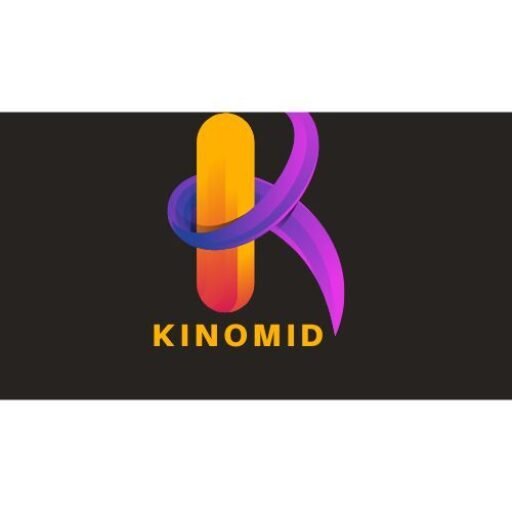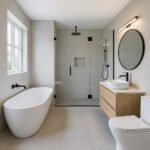In the age of climate awareness and sustainable design, remodelling your bathroom with eco-consciousness in mind is no longer just a trend—it’s a responsible choice. Whether you’re updating an outdated space or crafting a luxurious retreat, embracing eco-friendly bathroom trends not only minimises your environmental footprint but also enhances functionality, comfort, and even property value.
This comprehensive guide explores the most impactful eco-friendly trends for your bathroom remodel, backed by sustainable principles, modern design aesthetics, and long-term savings.
Why Eco-Friendly Bathroom Remodeling Matters
The bathroom is one of the most resource-intensive areas in a home. From high water consumption to energy-hungry lighting and ventilation, it’s a prime space for sustainable upgrades. Eco-remodelling helps:
- Reduce water and energy usage
- Improve indoor air quality
- Decrease waste during renovation
- Lower utility bills
- Add long-term value to your home
By integrating sustainable practices into your remodelling plan, you’re investing in a cleaner planet and a healthier lifestyle.
1. Water-Saving Fixtures: The Cornerstone of Eco-Friendly Design
a. Low-Flow Toilets and Faucets
Switching to WaterSense-certified toilets and faucets can cut water usage by up to 60%. These fixtures use aerators or dual-flush systems to reduce water waste without compromising performance.
b. Smart Showerheads
Modern showerheads with flow restrictors or smart controls reduce water consumption while maintaining a high-pressure feel. Some models even track water usage digitally.
2. Sustainable Materials: Stylish and Responsible
a. Recycled or Reclaimed Tiles
Opt for tiles made from recycled glass, ceramic, or porcelain. Reclaimed wood can be used for accent walls, vanities, or shelving.
b. Bamboo and FSC-Certified Wood
Bamboo is rapidly renewable and moisture-resistant—ideal for bathroom furniture. Always ensure wood products are FSC-certified, ensuring sustainable forest management.
c. Recycled Countertops
Surfaces made from recycled glass, paper composites, or quartz blends offer durability and a low environmental impact.
3. Eco-Friendly Paints and Adhesives
Choose low-VOC (volatile organic compound) or zero-VOC paints, sealants, and adhesives to ensure better indoor air quality. These products limit toxic emissions, protecting both your health and the environment.
4. Energy-Efficient Lighting and Heating
a. LED Lighting
Replace old bulbs with LED fixtures, which use up to 75% less energy and last significantly longer. Motion sensors or timers can add further efficiency.
b. Radiant Floor Heating
Radiant heating systems under tiles are more energy-efficient than traditional forced-air systems and offer luxurious comfort with less energy waste.
c. Solar Tubes or Skylights
Natural lighting reduces the need for artificial lights. Install skylights or solar tubes to brighten your space without electricity.
5. Smart Technology for Sustainability
a. Smart Ventilation
Use moisture sensors and programmable exhaust fans to improve air quality while reducing unnecessary power use.
b. Smart Water Monitors
Install devices that detect leaks and track water consumption, helping you prevent costly damage and reduce waste.
6. Waste-Reduction Practices During Renovation
a. Deconstruction Over Demolition
Instead of demolishing, salvage usable materials (like cabinetry or mirrors) for reuse or donation.
b. Choose Local Suppliers
Sourcing materials locally reduces transportation emissions and supports nearby businesses.
7. Green Certifications and Planning
Work with remodelers who follow LEED (Leadership in Energy and Environmental Design) principles or adhere to Green Building Standards. A thoughtful design plan that prioritises sustainability can balance aesthetics, functionality, and environmental stewardship.
FAQs: Eco-Friendly Bathroom Remodeling
Is an eco-friendly bathroom remodel more expensive?
What is the most cost-effective eco-friendly upgrade?
Can I make my bathroom eco-friendly without a full remodel?
Are eco-friendly materials durable?
How can I verify if a product is truly eco-friendly?
Final Thoughts
An eco-friendly bathroom remodel is more than a design decision—it’s a lifestyle commitment. By embracing water conservation, energy efficiency, non-toxic materials, and waste reduction, you’re creating a space that’s both luxurious and responsible.
Whether you’re a homeowner, interior designer, or eco-enthusiast, these sustainable trends offer a practical path to modern, conscious living. And in doing so, you’re not just transforming your bathroom—you’re shaping a better future.



